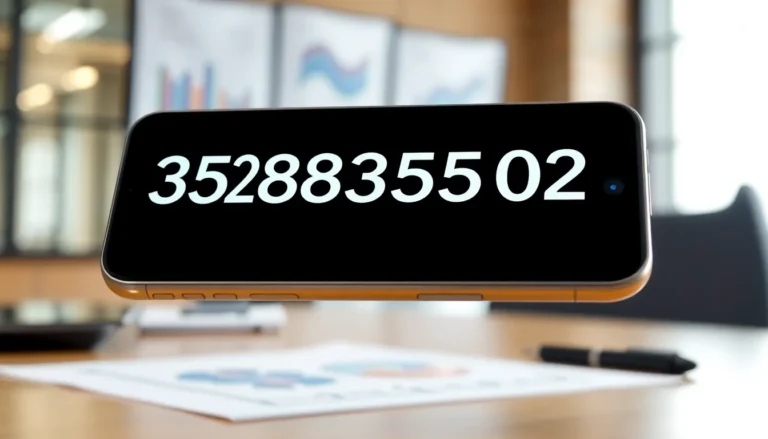Ever wondered what “risky drive” means on Life360? It’s not a new extreme sport or the latest dance craze. Instead, it’s a feature designed to keep loved ones safe while they’re on the road. Picture this: your teenager zooms off to a friend’s house, and you get a notification that their driving style is a bit more “Fast and Furious” than “Grandma’s Sunday drive.”
Life360’s risky drive alerts highlight behaviors like hard braking and rapid acceleration, giving families peace of mind. With this handy tool, parents can stay informed without playing the role of the backseat driver. So buckle up as we dive into what risky drive means and how it can help keep your family safe while adding a dash of humor to those heart-pounding moments.
Table of Contents
ToggleUnderstanding Life360
Life360 offers a family safety app that fosters connections among loved ones while ensuring road safety. This platform includes a variety of features, with the risky drive indicator being one of the most significant. Users receive alerts regarding concerning driving behaviors, such as sudden stops and excessive speed, allowing family members to monitor each other’s driving practices.
Safety reports provide detailed insights into driving habits. Drivers can review their trips and understand how their behavior might improve over time. Families appreciate this transparency, as it encourages safer driving while maintaining awareness of potential risks.
The app’s simple interface makes it accessible for all ages. Notifications promote proactive discussions about responsible driving, especially for inexperienced drivers. Parents value the opportunity to engage with their teens about road safety without an invasion of privacy.
Automatic crash detection enhances safety for all users. If the app senses a collision, emergency services are notified promptly. Families benefit from knowing that help is on the way, increasing confidence while driving.
In addition, Life360 strengthens relationships through effective communication. Messages and location sharing enhance family connections, enabling members to stay in touch. The app supports direct interactions, making it easier to discuss driving concerns openly.
Overall, Life360’s focus on safety and connection creates a supportive environment. Utilizing the risky drive feature reflects a commitment to road safety while encouraging families to maintain a balance between independence and oversight. Users find themselves equipped with tools to foster responsible driving habits within their families.
Overview Of Risky Drive


The “risky drive” feature on Life360 plays a crucial role in ensuring road safety. Parents receive real-time notifications regarding their child’s questionable driving actions.
Definition Of Risky Drive
Risky drive refers to a monitoring feature that evaluates driving behaviors like hard braking, rapid acceleration, and sharp turns. This function tracks specific metrics, allowing families to identify concerning habits. Alerts trigger when a driver exhibits behaviors considered unsafe, thereby promoting discussions about responsible driving. The feature aims to help reduce accidents and improve overall road safety for inexperienced drivers.
Importance Of Monitoring Driving Behavior
Monitoring driving behavior holds significant importance for families, particularly those with novice drivers. It encourages safer driving practices by highlighting areas of concern that may otherwise go unnoticed. With data-driven insights, parents can engage in meaningful conversations about safe driving habits. Fostering open communication leads to greater awareness among young drivers. Ultimately, monitoring creates an environment where families prioritize safety while allowing independence on the road.
Features Of Risky Drive On Life360
Risky drive on Life360 enhances road safety by monitoring driving behaviors. It provides parents with critical alerts regarding unsafe driving practices, allowing informed conversations.
How It Works
Life360 detects real-time driving patterns through mobile device sensors. When instances of hard braking, rapid acceleration, or sharp turns occur, notifications alert family members. Users receive timely insights after each drive, highlighting instances that may require discussion. Alerts help parents understand driving behaviors and address potential risks effectively. Accessible visual reports accompany these alerts, making information easy to interpret.
Metrics Used To Determine Risk Level
Life360 evaluates several metrics to assess a driver’s risk level accurately. Key metrics include hard braking incidents, acceleration rates, and turning angles. Data aggregation across multiple drives helps establish a comprehensive driving profile. Users may notice how often risky behaviors occur, offering a clear picture of driving habits. Detailed reporting presents these metrics visually, enabling better understanding. Families can rely on this data to encourage safer driving practices, reinforcing accountability among drivers.
Implications Of Risky Driving
Risky driving has significant implications for safety and cost. Understanding these factors helps families promote responsible driving.
Safety Concerns
Unsafe driving behaviors lead to increased risks on the road. Hard braking, rapid acceleration, and sharp turns contribute to higher chances of accidents. Families gain insights into these habits through notifications from Life360, enabling proactive interventions. Research shows that young drivers often lack experience, making them more susceptible to dangerous driving practices. Surveillance of driving behaviors fosters communication, ensuring that all members prioritize safety. Engaging in discussions about these findings enhances overall awareness, reducing potential hazards for everyone on the road.
Impact On Insurance Rates
Insurance premiums often reflect driving behavior, including risky habits. Providers frequently assess individual profiles based on claims history and driving records. A history of unsafe driving can lead to increased rates for drivers. Life360’s risky drive feature allows families to maintain safer driving habits, potentially lowering premiums over time. Insurers appreciate responsible drivers who demonstrate reduced risk through safe practices. Moreover, improved driving behavior can lead to discounts on insurance policies, providing financial incentives for families committed to safety. Tracking driving patterns helps users cultivate habits that not only protect them but also positively influence their insurance costs.





